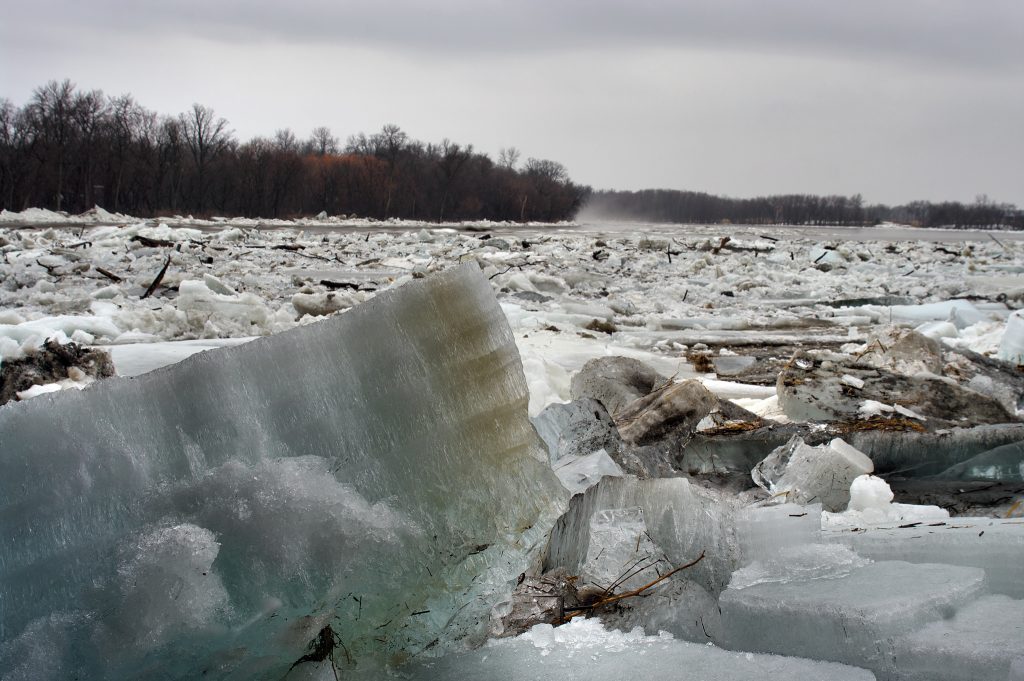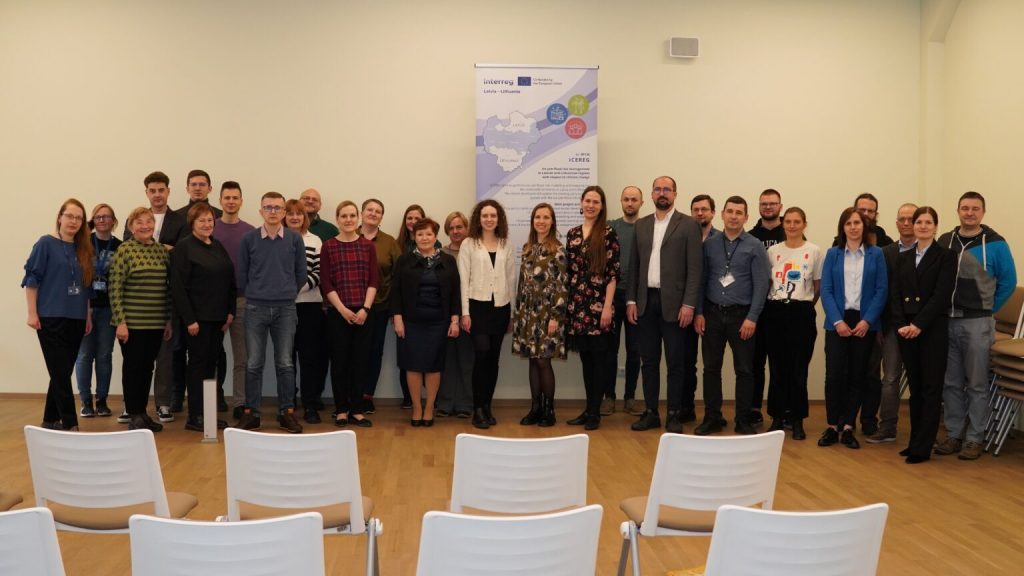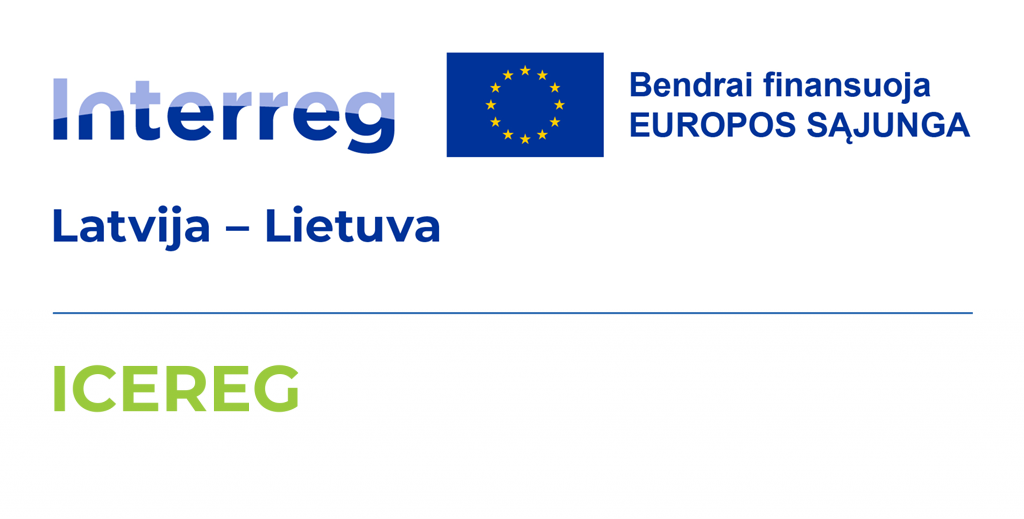2024-04-23 | Latvian and Lithuanian experts launch joint project “ICEREG
In 2010, the Lithuanian economy suffered €2.8 million in damages as a result of ice drifts on Lithuanian rivers and rising floodwaters. Last year, a 30-kilometre-long ice jam on the Daugava River near Jekabpils in Latvia cost the Latvian economy around €2.5 million.
Hoping to help prevent millions of euros in losses, Latvian and Lithuanian scientists have embarked on a joint project called “ICEREG – Managing the risk of ice drift flooding in Latvia and Lithuania under a changing climate”. The project, which started on 9 March this year, aims to improve the management of ice drift flood risk by developing detailed flood maps and improving the conceptual model of ice drift formation, especially in the context of climate change.
Ice drifts – an unpredictable phenomenon
Motivating the expediency of such a study, Jūratė Kriaučiūnienė, Ph.D., representative of the project at the Lithuanian Energy Institute, Head of the Hydrology Laboratory, points out that in Lithuania, floods are mostly caused by melting snow and ice (about 70-75% of the cases), heavy rainfall (about 15%) and rising of the level of the water level in the Baltic Sea, faulty operation of the dams and accidents (about 15%).
“With today’s technology, the onset and magnitude of a snowmelt flood can already be predicted quite accurately a week or two in advance. In contrast, floods caused by ice drifts are completely unpredictable: in such cases, the speed of the water level rise is determined by hours, not days,” Kriaučiūnienė emphasises.
Although both Latvia and Lithuania have already included the reduction and management of snowmelt and flash flood risks in their climate change adaptation plans, the dynamics of ice drifts are still understudied. And ice drifts, as an additional source of flood risk, pose an ominous risk of potentially massive flooding and damage – both to the communities of the border regions of both countries in particular and to the economies of the countries in general.
Dr. J. Kriaučiūnienė adds that “currently existing flood risk maps do not provide a detailed assessment of the risks posed by ice drifts, as both Lithuania and Latvia do not yet have numerical models that could assess the formation, prediction and risk of such floods”.
And the risks are huge. Recalling the 2010 flood, Dr Vytautas Akstinas, a senior researcher at the Hydrology Laboratory and an expert in hydromorphology for this project, cites some really unpleasant statistics: “The flood caused by the ice drifts affected an area of 40,000 hectares. The municipalities of Šilutė, Pagėgiai, Kaunas, Panevėžys, Jonava and Joniškis suffered damage. In the Nemunas delta alone, 35 000 hectares were flooded. Residents and their property, businesses, agricultural companies, roads, etc. were affected.”
The expert recognises that flooding can change in two directions as the climate changes. “One of the two main prevailing views is that the risk of ice sheet flooding will decrease simply because of rising air temperatures, which will lead to less ice formation and more melting of the ice. The opposite hypothesis emphasises the danger of floods becoming more extreme and unexpected – that a society accustomed to floods may relax a little too much and ignore the real threats. This relaxation and lack of preparedness for an emergency could be even more dangerous than the more frequent ice drift floods”, says Akstinas.
Dr Kriaučiūnienė agrees with her colleague on the relaxation of people: ‘We can observe people’s negligence or carelessness even now. For example, when choosing a place to live, people try very hard to settle as close to the river as possible. If you try to draw their attention to the danger of flooding, they often wave their hands and say, ‘People have been living here for 20 years and there have been no floods. Then they build a house there, the flood inundates them and their territory, and then they complain that the insurance doesn’t compensate them”, smiles the hydrologist.

ICEREG project progress and practical benefits
Among other benefits, the ICEREG project will also be useful for people who are more responsible in their choice of place to live. A special map will be drawn up and published on the website of the Lithuanian Hydrometeorological Service, highlighting areas at higher risk of ice drift flooding. However, the map will initially not cover the whole of Lithuania.
“In this particular project, we will analyse the river basins of the northern Lithuanian rivers (Venta, Mūša, Lėvens) and the southern Latvian rivers. However, the project will develop a methodology that will allow us to analyse the basins of all other Lithuanian rivers, if necessary,” says Dr. J. Kriaučiūnienė.
The project, to be completed in 2026, will model and map the most vulnerable areas to ice drifts in Latvia and Lithuania. “First, we will analyse historical data in the rivers of Northern Lithuania and identify the sections of the two rivers that pose the greatest risk to the population,” Akstinas briefly outlines the project. “We will then carry out modelling work on the selected river stretches to assess the different probabilities of ice drifts and how they may affect the surrounding areas and the population. In other words, a generic analysis that will allow us to identify problem areas and assess how dangerous they are for the public,” concludes the hydromorphology expert.
Kriaučiūnienė mentions her colleagues from the Finnish Environment Institute (SYKE) in a special word: “In the ICEREG project, we will use a numerical model of ice drift formation developed by SYKE scientists in Finland, integrated with the HEC-RAS hydrodynamic model. The ice drift model is, of course, tailored for Finnish rivers, so we will have to adapt the model to Lithuanian conditions by filling it with our own data and calibrating it to give the right results for our rivers. Our Finnish colleagues have not only agreed to share their model, but also to train us in all its possibilities,” said Ms Kriaučiūnienė.
Once the hydrometeorological data has been compiled and the calculations are in line with historical, actual flood results, it will be possible to make predictions for the future: to study different climate change scenarios, to study changes in temperature and precipitation, and to look at the potential for the formation of ice drifts, even if it is hundreds of years in the future.
The model developed by the ICEREG project will be used to improve the current early warning system by including information on ice drift flooding. Successful implementation of the project should not only increase the safety of regions facing these problems, but also reduce potential economic damage.

Pictured here on 3 April. The project kick-off meeting took place in Riga, bringing together representatives of the three organisations involved in the project.
The ICEREG project, led by the Latvian Centre for Environment, Geology and Meteorology, involves the Lithuanian Energy Institute and the Lithuanian Hydrometeorological Service under the Ministry of Environment.
Co-funded by the European Union. The total project budget is EUR 654 082.50. Co-financing from the European Regional Development Fund – EUR 523 266.00.
This article has been produced with financial support from the European Union. The content of this article is the sole responsibility of the Lithuanian Energy Institute and does not necessarily reflect the views of the European Union.
